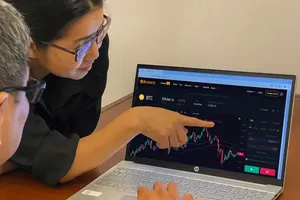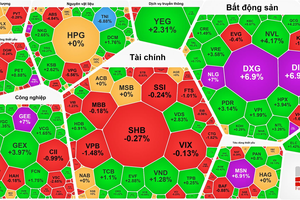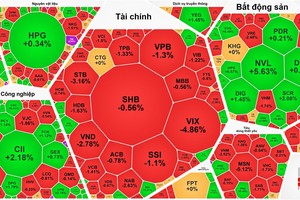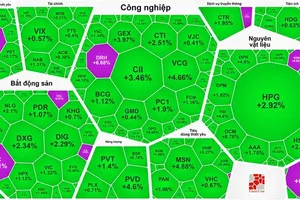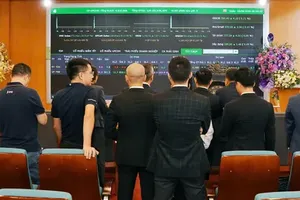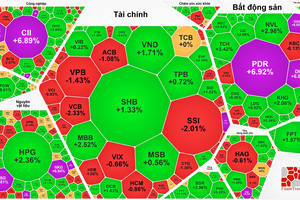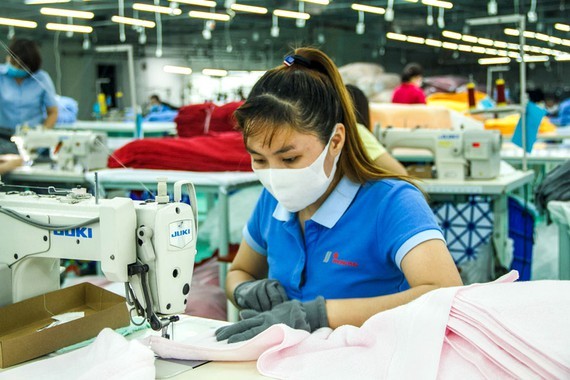
At the end of 2021, US President Joe Biden signed a law banning the import of cotton materials produced in Xinjiang in China into the US. The US Customs and Border Protection Agency estimates that about US$9 bn of cotton products were imported into the US from China in 2021. This can be seen as a great opportunity for major listed cotton yarn companies in the country such as Vietnam Textile and Garment Group (VGT), Damsan Joint Stock Company (ADS), and Phong Phu Corporation (PPH). These enterprises can benefit from the US refusal to buy cotton products from China, and move to buy fabrics and yarns from Vietnam.
This is similar to Europe in March 2021, after many major international fashion brands such as Nike, H&M, Uniqlo, and Zara announced stopping use of cotton materials from Xinjiang. China's share of fabric and yarn exports to Europe has decreased from 52.4% in 2020 to 44.7% in 2021. Meanwhile, by becoming the EU's 6th largest non-regional textile and garment supplier in 2021, Vietnam can take advantage of the EU and US markets from 2022.
According to the European Textile and Apparel Federation (Euratex), the EU textile industry continues to see good recovery after the Covid-19 pandemic. Specifically, the value of textile and garment output increased back to pre-pandemic days by the end of November 2021.
Meanwhile, the International Monetary Fund (IMF) and the World Bank (WB) have forecast global GDP growth to reach 4.9% in 2022, and world textile and garment demand in 2022 to return to 2019 level, reaching about US$740 bn. The recovery of the world textile and garment industry will also help Vietnam's textile and garment export turnover to meet its target for 2022 of US$43 bn, an increase of US$4 bn compared to USD 39 bn in 2021. Large textile companies such as Garment 10 Corporation (M10), Century Yarn JSC (STK), and Thanh Cong Textile-Investment-Trade JSC (TCM) have enough orders until the second and third quarter of this year.
Profit distribution
Despite facing many difficulties in the third quarter due to strict social distancing measures, 2021 was a successful year for textile and garment enterprises. According to estimates of VNDirect Securities (VND), total revenue in the fourth quarter of 2021 of listed textile companies increased by 24.1% because of recovery of the Southern textile companies.
After the end of the lockdown, most Southern companies were running at 85% to 90% capacity, compared with 50% to 60% capacity in the third quarter. Due to the fourth-quarter results, total revenue in 2021 of listed textile companies increased slightly by 7.6% while net profit increased by 57.4%. Companies recording impressive profit growth in 2021 include ADS which was up by 303%, VGT was up by 161.4%, and STK was up by 93%.
However, business results in 2021 show a division between regions among businesses. Specifically, Northern garment companies such as Song Hong Garment Joint Stock Company (MSH), and TNG Investment and Trading Joint Stock Company (TNG) show high profit growth in 2021 with an increase of 90.8%. The reason is that these enterprises grew on a low base in 2020, but improved their product portfolio and took advantage of orders from Southern textile companies. In contrast, garment companies in the South had lower profit growth because factories only operated at 50% to 60% capacity during the time of social distancing. TCM and Viet Tien Garment Corporation (VGG) are two listed companies that recorded negative profit growth in 2021, down 48% and 41%, respectively.
Factors in mind
Negative profit growth is also the reason why TCM and VGG go against the steep increase trend of textile and garment enterprises. According to statistics, textile stocks have achieved impressive growth since the beginning of 2021, reaching from 48% to 291%. For example, VGT was up by 153%, MSH was up by 126%, STK was up by 178%, TNG was up by 116%, and ADS was up by 291%. The rising wave of textile stocks is higher than that of the VN Index, helping investors in the past one year.
However, analysts warn investors to be cautious when investing in textile stocks at the moment. According to VND, although the textile and garment industry is expected to have a bright prospect in 2022, investors need to invest selectively because most of the industry shares are no longer cheap. Investors should only prioritize enterprises in the industry that have plans to expand factory capacity in the 2022 to 2025 phase. Enterprises that have the ability to expand capacity to achieve long-term growth are safer investments. For instance, textile enterprises such as ADS, TCM, and TNG have expanded their business into real estate and industrial park real estate. It is expected that this new business segment will help businesses maintain profit growth in the period 2022 to 2025 phase.
In addition to the above factors, investors need to pay attention to factor such as increasing input prices, if they want to invest in textile and garment stocks. This will put pressure on the business results of garment companies in 2022. Cotton prices are now at a ten year high, which also reflects a gradual improvement in the global consumption outlook.


